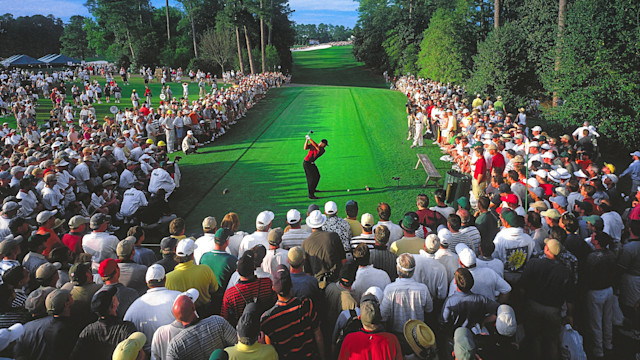quick coaching
What Golfers Can Learn From Masters Champion Rory McIlroy's Swing
By Justin Kraft, PGA, & Ryan Adams, PGA
Published on

What can you say ... it was an incredible rollercoaster of a day in golf. And it ended with triumph.
Rory McIlroy won the 2025 Masters on the first playoff hole over Justin Rose, capturing his first Green Jacket and - finally - completing the career Grand Slam.
McIlroy's swing is a thing of beauty and it propelled him to his fifth Major Championship title when he needed it the most. And while golfers might not be able to throw on a Green Jacket, they can certainly copy some of McIlroy's best traits . . . especially when it comes to the dreaded slice.
Below, PGA Coach Justin Kraft, the Director of Instruction at Spring Hill Golf Club in Wayzata, Minnesota, breaks down what you can learn from Rory.
Beyond the ways you can copy Rory's backswing to help your slice, there's a few other lessons we can learn from the new Masters Champion . . . and it starts with his mental resolve.
A mindset shift you need to try
It looked like McIlroy, after a costly double bogey on Nos. 15 and 17 during the first round, was going to shoot himself out of the tournament yet again. He dug deep though. He found something that propelled him to fire a second-round 66 and, after play, had this to say:
He would need that resolve on the final day, too, with another set of costly doubles on the first and 13th hole. But he, again, buried those memories quickly and hit a thrilling shot on 15. He birdied there and birdied 17, but then bogeyed the final hole that led to the playoff.
But it was there, for the last time, that he got back off the mat and nestled one in to mere feet on the 18th to tap in for victory.
You can see just how many times McIlroy had to fight back - mostly with himself - to win at Augusta National. It's hard not think his sentiments from after the second round were what carried him. Golfers would be wise to do the same when they play. It's not the one bad hole or the three bad ones that you should focus on. Zero in on how well you played the rest of the round. That confidence and self-belief can buoy you - just as it did with Rory - through thick and thin.
The "shot of a lifetime" is a shot we've all faced
Here's the one we're talking about. You've likely seen it 100 times already:
An incredible display of talent, confidence and grit to pull that off. But there's two things we can learn from this: one, it's easier to get out of the trees than you think and, two, learning to curve the ball can be a huge advantage.
First, the shot in the trees:
- To keep the ball low, play a longer iron, like a 5 or 6, and have it just back of the middle of your stance. That'll help you keep the ball below the branches.
- Choke down a half inch for some added control. You'll need it.
- If you need to get around trees like Rory, aim further right or left so you're almost hitting a U turn like shape around the trees.
- Swing back as you normally do but then on the follow-through, really release your hands to accentuate the curve, and abbreviate the follow-through. It'll keep the ball low but then curving and rising toward your target. You may not need a full backswing on some shots, too.
OK, now on to how curve can help you. PGA Coach Brendon Elliott had a great piece on shot shaping and how you can use it to your advantage. At Augusta National, where it's almost required to work the golf ball, Rory hit everything from high draws to low fades.
The next time you're at the range practicing, after getting loose, hit 5 wedges, 5 mid-iron shots, five long iron shots and five drivers. Notice which one the ball is curving. That's a shape you can work with when the pressure is on. You just have to play for it.
Hopefully these tips help you find some inspiration to play better this spring. It's hard not to be motivated to play good golf after watching Rory finally throw on a Green Jacket.


